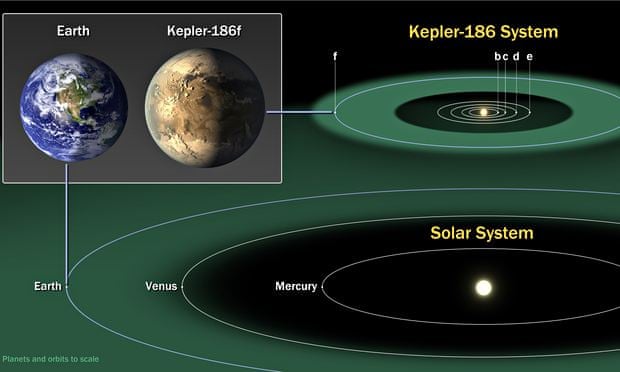Kepler 438b completes an orbit every 35 days, making its year ten times shorter than Earth’s.
Key Takeaways
- Kepler 438b, an exoplanet 470 light years away, might be the most Earth-like world found yet.
- Located in the habitable zone, Kepler 438b could support liquid water and possibly life.
- The planet’s small, rocky surface and distance from its star make it similar to Earth.
- Discovered by NASA’s Kepler telescope, Kepler 438b orbits its star in just 35 days.
- New telescopes like the James Webb will aid in studying Kepler 438b’s atmosphere for life signs.
_________________
Astronomers have discovered a potentially habitable exoplanet, Kepler 438b, located 470 light years away in the constellation of Lyra. The planet, slightly larger than Earth, orbits an orange dwarf star, and receives about 40% more heat than Earth does from the Sun. Despite this increased warmth, Kepler 438b lies within the “Goldilocks zone” — a habitable range where temperatures could allow liquid water to exist on its surface. This crucial feature, along with its rocky composition, makes it a prime candidate for supporting life.
The Discovery of Kepler 438b and Its Potential for Life
Kepler 438b’s small size, about 12% larger than Earth, increases the likelihood that it is a rocky planet rather than a gas giant. Researchers estimate a 70% chance of it having a rocky surface, which is essential for retaining water and potentially fostering life. Its orbit is much shorter than Earth’s, with a year lasting just 35 days. This discovery, announced by scientists at the Harvard-Smithsonian Center for Astrophysics at an American Astronomical Society meeting in Seattle, highlights Kepler 438b’s unique position as an Earth-like world that may be suitable for life.
The Kepler space telescope, which has been instrumental in locating exoplanets by detecting subtle changes in light as planets pass in front of their stars, identified Kepler 438b and several other planets in the habitable zones of distant stars. These planets join a group of Earth-sized exoplanets with promising environments. Alongside Kepler 438b, another exoplanet, Kepler 442b, was found in the same constellation. Although larger than Earth and receiving two-thirds of the starlight Earth does, Kepler 442b shares similarities with Earth that raise the possibility of a rocky surface and life.

Confirming Kepler 438b’s Existence and Future Exploration
To verify Kepler 438b’s existence, scientists used a computer program called Blender, which confirmed the planet’s probability of being real at over 99.7%. False positives can occur when background stars eclipse each other, but Blender’s analysis helped avoid such errors. Among the 12 suspected planets analyzed, 11 were confirmed as real, with Kepler 438b standing out as one of the most Earth-like candidates.
While astronomers do not yet know if Kepler 438b has an atmosphere, its distance from its star suggests it may be cloaked in gases that regulate its temperature. Upcoming telescopes, including the James Webb Space Telescope and the European Extremely Large Telescope, are expected to provide more insight into exoplanet atmospheres. In the meantime, researchers are investigating indirect signs of habitability, such as moons orbiting these planets or the presence of gas giants in their systems, which could protect smaller planets from asteroid impacts. As technology advances, Kepler 438b represents a hopeful candidate in the search for extraterrestrial life.




